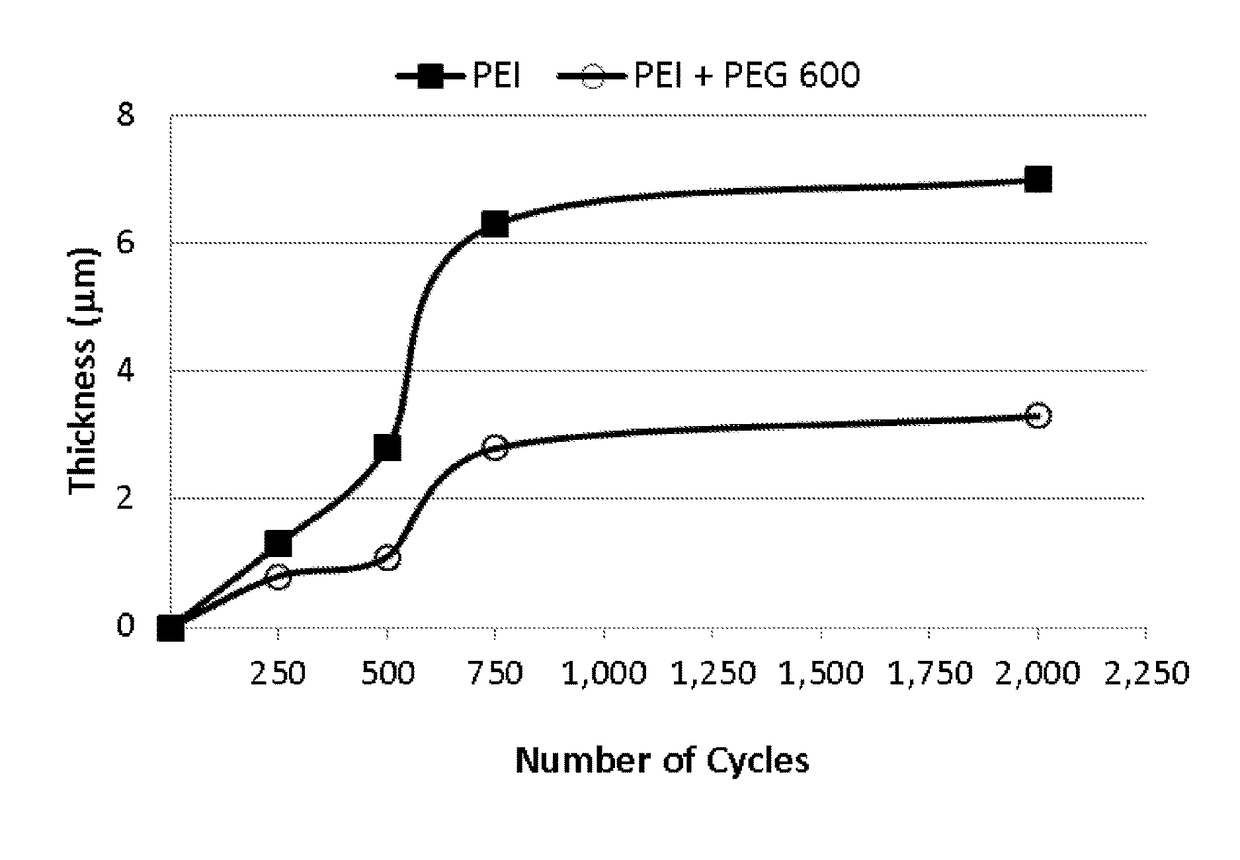Release layer treatment formulations
a technology of release layer and formulation, which is applied in the direction of printing, duplicating/marking methods, ink transfer from master sheets, etc., can solve the problems of insufficient drying of ink, inability to address all issues of coated substrates, and inability to solve all problems
- Summary
- Abstract
- Description
- Claims
- Application Information
AI Technical Summary
Benefits of technology
Problems solved by technology
Method used
Image
Examples
example 1
Conditioning Formulations
[0073]Exemplary conditioning solutions that can be used to treat an ITM upon which aqueous ink formulations can be deposited are provided hereinbelow, wherein the amount of the respective ingredients is provided in weight percent (wt. %) of the complete conditioning formulation, the water being deionized:
[0074]Conditioning Solution A
[0075]
PEI Lupasol ® PS (BASF)1(MW 750,000, ~33% solid)Sucrose4Water95
[0076]Conditioning Solution B
[0077]
PEI Lupasol ® P (BASF)0.7(MW 750,000, ~50% solid)Glycerol1Water98.3
[0078]Conditioning Solution C
[0079]
PEI Lupasol ® HF (BASF)5(MW 25,000, ~56% solid)Triethanolamine10Water85
[0080]Conditioning Solution D
[0081]
PEI Lupasol ® WF (BASF)2(MW 25,000, ~99% solid)Pentaerythritol1Water97
[0082]Conditioning Solution E
[0083]
PEI branched, MW 25,000 (Aldrich)3Polyethylene glycol 4006Water91
[0084]Conditioning Solution F
[0085]
PEI, 80% ethoxylated MW 111,000, 37% water solution (Aldrich)4Glycerol4Water92
[0086]Conditioning Solution I
[0087]
ViviPri...
example 2
Resolubilization of Dried Conditioning Formulations
[0096]The re-solubility of Solution I and Solution J was tested according to the following procedure: each sample (50 ml) was dried for 3 days at 100° C. The dried residue was resuspended with 50 ml of hot water (with heating to 60° C. to accelerate the experiment and to approximate the temperature of the ITM).
[0097]Results: the residue of Solution I dissolved almost immediately (in less than 1 second). By contrast, dissolution of Solution 1, which was devoid of a resolubilization agent, required 1 minute of intensive shaking.
Effect of Resolubilizing Agents on Resolubilization of Dried Conditioning Agents
[0098]Once dried, various PEIs found to be generally suitable as conditioning agents do not easily resolubilize in water, even though such PEIs were water soluble or even highly water soluble, ab initio. Some guar-based and Viviprint conditioning agents may suffer from similar phenomena, albeit on a lesser scale.
[0099]The dried cond...
example 3
Vapor Pressure Measurement Procedure
[0108]Vapor pressure or equilibrium vapor pressure is the pressure exerted by a vapor in thermodynamic equilibrium with its condensed phases (solid or liquid) at a given temperature in a closed system. The equilibrium vapor pressure is an indication of a liquid's evaporation rate and relates to the tendency of particles to escape from the liquid or solid they are part of. A substance with a low vapor pressure at a temperature of interest is considered non-volatile. If the vapor pressure of a material at a temperature of interest is not provided by the supplier of such compound, this characteristic can be assessed as follows.
[0109]Vapor pressure can be measured using a conventional thermogravimetric equipment according to a method described by Duncan M. Price in Thermochimica Acta 367-368 (2001) 253-262.
[0110]The relationship between volatilization rate and vapor pressure may be described by the Langmuir equation for free evaporation:
[0111]-ⅆmⅆt=px...
PUM
| Property | Measurement | Unit |
|---|---|---|
| vapor pressure | aaaaa | aaaaa |
| viscosity | aaaaa | aaaaa |
| vapor pressure | aaaaa | aaaaa |
Abstract
Description
Claims
Application Information
 Login to View More
Login to View More - R&D
- Intellectual Property
- Life Sciences
- Materials
- Tech Scout
- Unparalleled Data Quality
- Higher Quality Content
- 60% Fewer Hallucinations
Browse by: Latest US Patents, China's latest patents, Technical Efficacy Thesaurus, Application Domain, Technology Topic, Popular Technical Reports.
© 2025 PatSnap. All rights reserved.Legal|Privacy policy|Modern Slavery Act Transparency Statement|Sitemap|About US| Contact US: help@patsnap.com



